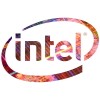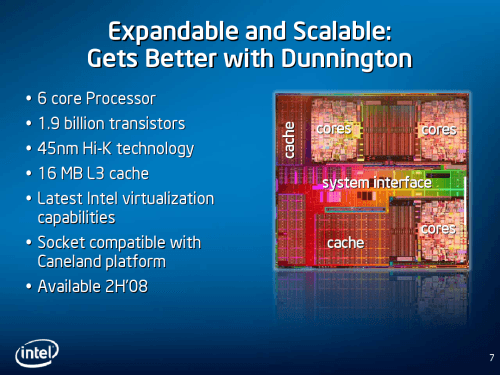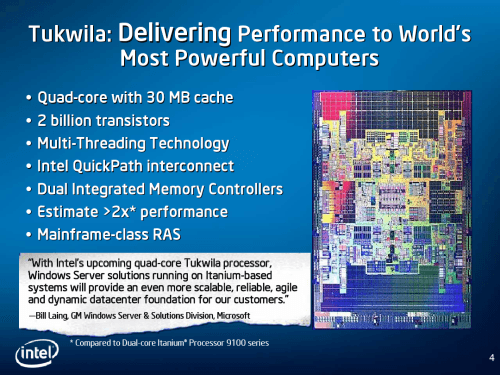- Qualcomm Launches Snapdragon 4 Gen 2 Mobile Platform
- AMD Launches Ryzen PRO 7000 Series Mobile & Desktop Platform
- Intel Launches Sleek Single-Slot Arc Pro A60 Workstation Graphics Card
- NVIDIA Announces Latest Ada Lovelace Additions: GeForce RTX 4060 Ti & RTX 4060
- Maxon Redshift With AMD Radeon GPU Rendering Support Now Available
Intel Details Nehalem, Dunnington, Tukwila & Larrabee

At a press briefing, much more was revealed about the numerous upcoming technologies from Intel. In this article, we will be taking a look at Nehalem, Dunnington, Tukwila and Larrabee, along with a look at the new QuickPath Interconnect.
Page 2 – Dunnington, Tukwila
Dunnington – Xeon Grows an Extra Pair of Legs
Dunnington will be the last major upgrade for the Xeon family before we jump into 32nm. The processor will be offered in one configuration that includes six cores (Hexal-Core? Sexal-Core?) and be built using 1.9 billion transistors. Interestingly, unlike the current Xeon line-up, Dunnington will be toning down the amount of L2 Cache and is instead offering 16MB of L3 Cache.
As seen in the figure below, the processor seems to be a native six-core offering, dissimilar to the current Quad-Core offerings which are essentially two Dual-Core dies slapped beside each other (Nehalem will be native Quad-Core). Despite the seemingly larger die size, Dunnington will not include an integrated memory controller, like Nehalem.
One might ask, “Why six?” and it’s a good question. The obvious move would have been to offer an eight-core chip. As we learned at September’s IDF, Octal-Core desktop and server chips are in the works, so where a six-core chip came from is interesting. Pat elaborated on this, and explained that Intel tested out different configurations and found this to be the sweet spot. He touched on the fact that some applications may benefit more from eight cores and less cache, and others may benefit from less cores and more cache, but Dunnington hits the sweet spot by settling right in the middle.
Also touched on is the fact that Intel’s Xeon line-up offers the most efficient processors on the market, in terms of performance/watt. SPECpower is quickly becoming a standard industry benchmark, as it values these exact figures. Intel boasted that on the official top list for the benchmark, they hold the top ten spots. It’s interesting to note, however, that no AMD processor is listed in the entire list of 22 system configurations.
Tukwila – Itanium Moves Forward
Itanium is not a product that any of our regular visitors would be interested in, primarily because it’s not a desktop chip, or a normal server chip for that matter. Itanium is designed not to offer great performance alone, but superb performance when stacked together. These chips live their lives in large mission-critical servers and can also reside in super-computers.
Up to this point, Itanium 2 processors have been available in Dual-Core offerings only, but the near-future will bring the first Quad-Core offerings. Specific models and frequencies were not mentioned, but these processors with include over 2 billion transistors and will offer up to 30MB of L3 Cache. In addition, it will also utilize Intel’s revamped Multi-Threading technology, along with the QuickPath Interconnect.
As is the case most of the time with our desktop processors, simply doubling the amount of cores never doubles the actual performance. Rather, it falls to around a 90 – 95% increase. With the architecture upgrades with Tukwila, however, Intel believes that over a 2x increase will be seen over the current Itanium 9100 series.
Support our efforts! With ad revenue at an all-time low for written websites, we're relying more than ever on reader support to help us continue putting so much effort into this type of content. You can support us by becoming a Patron, or by using our Amazon shopping affiliate links listed through our articles. Thanks for your support!







